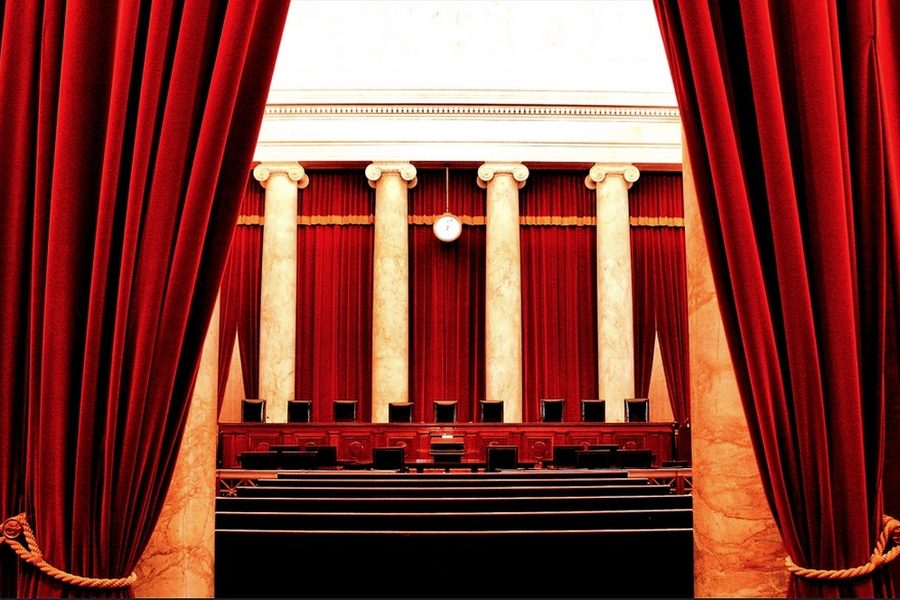Last Week’s Other Big SCOTUS Ruling: Upholding a Critical Piece of the Fair Housing Act
“It’s a pretty resounding win for civil rights law.”
Dan Schneider

The Supreme Court drew significant attention for its gay marriage ruling last week, but another critically important decision drew almost no attention: On Thursday, A divided SCOTUS handed a victory to fair housing advocates, protecting a major tool for combating housing discrimination and segregation.
The court ruled in Texas Department of Housing and Community Affairs v. The Inclusive Communities Project that lawsuits alleging discrimination under the Fair Housing Act don’t necessarily need to show a discriminatory intent, only a discriminatory effect, and that so-called “disparate impact” claims are allowed under the law. In short, if an otherwise neutral housing policy leads to discrimination against people of a particular race, ethnicity or nationality, it can be challenged in court.
Many civil rights and housing groups were anxiously awaiting the result in this case, which risked undoing decades of established housing rights law. But Jean Paul Schnapper-Casteras, Special Counsel at the NAACP Legal Defense and Education Fund, which wrote an amicus brief supporting the Inclusive Communities Project, described feeling excitement and relief over the court’s opinion Thursday.
“It’s a fulsome embrace of disparate impact and the Fair Housing Act, and a pretty resounding win for civil rights law,” Schnapper-Casteras said.
The case focused on whether “disparate impact” lawsuits against discriminatory housing practices were allowed under the federal Fair Housing Act. Unlike with lawsuits over intentional discrimination, “disparate impact” is a legal theory that allows a person, corporation or government entity to be sued when their actions have a discriminatory effect — even if unintentionally — on a certain racial or ethnic group.
Such lawsuits have been used in the past to challenge landlords who have adopted racial quotas in a housing project or to overturn zoning laws that limit the construction of multifamily houses. Writing for the majority, Justice Anthony Kennedy made it clear that such claims were not only allowed under the law but are a necessary bulwark against the ongoing plight of segregation in America’s major cities.
“De jure residential segregation by race was declared unconstitutional almost a century ago” in the 1917 case Buchanan v. Warley, Justice Kennedy wrote. But he noted “its vestiges remain today, intertwined with the country’s economic and social life.”
However, Kennedy acknowledged that the need to balance desegregation efforts against the needs of entrepreneurs and government officials, who require latitude to make good faith decisions about housing development and zoning policy without the constant fear of a lawsuit. Thus, Kennedy declared, the main measure of whether a policy can be challenged under a disparate impact theory should be whether that policy is “artificial, arbitrary and unnecessary.”
What this phrase means for disparate impact cases in the near future will likely be a matter of interpretation for the lower courts to decide.
Kennedy also noted the practical benefits of this legal tool. Disparate impact liability, he noted, has been used to overturn laws like a former Louisiana statute enacted after Hurricane Katrina, which restricted apartment rentals to “blood relatives” in an area of New Orleans that was 88.3% white and 7.6% black.
“In this way, disparate-impact liability may prevent segregated housing patterns that might otherwise result from covert and illicit stereotyping,” Kennedy wrote.
The 78-year-old justice’s opinion paid particular attention to the history of the FHA. Relying on the law’s legislative history — including the results of the Kerner Commission, a panel set up under President Johnson to study disparities in the housing market — and the context of the Civil Rights Era in which the FHA was passed, Kennedy determined that the purpose of the law was to do far more than just stop flagrant acts of discrimination: It should take a proactive role in promoting racial justice.
“The FHA must play an important part in avoiding the Kerner Commission’s grim prophecy that ‘[o]ur Nation is moving toward two societies, one black, one white — separate and unequal,’ ” he wrote.
This case was not the first challenge to the viability of disparate impact claims. Two lawsuits in the past decade seeking to undermine this aspect of the Fair Housing Act, one from St. Paul, Minnesota, and one in Mount Holly Township, New Jersey, both settled out of court prior to reaching the justices.
In this case, the Inclusive Communities Project (ICP), a Texas non-profit that seeks to promote integrated housing in the Dallas area, was denied access to federal tax credits distributed by the Texas Department of Housing and Community Affairs (DHCA) to build affordable housing in the mostly-white Dallas suburbs. The ICP argued that the Texas DHCA’s policies had the effect of causing segregation by concentrating 92.29% of all low-income housing credits in majority-minority areas of the city.
Although the ICP succeeded in getting the Supreme Court to side with their view of the Fair Housing Act, the case was remanded back to the Fifth Circuit Court of Appeals for further proceedings and to determine the merits of the group’s claim. The ICP did not respond to a request for comment.
In a statement, Texas Attorney General Ken Paxton, whose office argued on behalf of the state Texas DHCA, said that he was “disappointed” in the court’s decision, which he called “overreaching and misguided.”
“Today’s decision places an unfair burden on landlords, lenders and developers, and will ironically lead them to make their decisions based upon consideration of race,” Paxton said. Paxton also suggested that, on remand to the Fifth Circuit, the department will still be able to show that its reasons for not building low-income housing in largely white suburbs were rooted in a “legitimate objective,” and that this case was “far from over.”
Responding to Mr. Paxon’s comments, Professor Myron Orfield of the University of Minnesota Law School said that conservatives who chafe at the Court’s ruling should remember that this fair housing tool was once supported by many on the right, including former President Richard Nixon, former Michigan Governor George Romney, and former Supreme Court Chief Justice Warren Berger.
He also noted that the Court’s opinion will likely settle any fight in the near-future over disparate impact’s viability, likely ensuring that the law can continue to be used to fight for racial justice in housing in the future. “It would be hard even if we had a very conservative president to appoint conservative justices to overturn this one,” Orfield said. “This should settle the issue for decades.”





